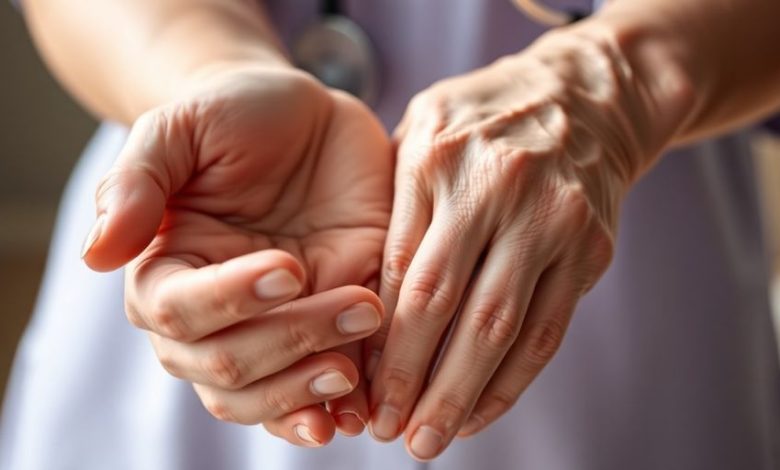The Scope of Physical Abuse in Nursing Homes

Defining Physical Abuse in Elder Care Settings
Physical abuse in nursing homes? It’s a really broad term, honestly. It covers anything from hitting and shoving to improper use of restraints. Basically, if a caregiver is using physical force in a way that harms or threatens a resident, it’s abuse. It’s not just about obvious injuries either. Things like rough handling during transfers or even depriving someone of physical comfort can fall under this umbrella. It’s important to remember that residents have rights, and those rights include being treated with dignity and respect. The elderly population is growing, so we need to be extra careful.
Prevalence and Risk Factors for Physical Abuse
Okay, so how common is this stuff? More common than you’d hope, that’s for sure. Studies show that a disturbing number of nursing home residents experience some form of abuse, and physical abuse is a big part of it. Several factors can increase the risk. For example:
- Staff burnout: Overworked and stressed staff are more likely to lash out.
- Understaffing: Fewer staff means less supervision and more opportunity for abuse to occur.
- Poor training: If staff aren’t properly trained on how to handle difficult situations, they might resort to physical force.
- Resident characteristics: Residents with dementia or those who are physically frail may be more vulnerable. A significant percentage report abuse.
Recognizing Subtle Signs of Abuse
It’s not always obvious. Sometimes, the signs are subtle. You might not see bruises or cuts right away. Instead, look for things like:
- Changes in behavior: Is the resident suddenly withdrawn or anxious?
- Unexplained injuries: Even if they seem minor, investigate them.
- Fear of certain staff members: Does the resident seem afraid or uncomfortable around a particular caregiver?
- Reluctance to be touched: Are they flinching or pulling away when approached?
Trust your gut. If something feels off, it’s worth looking into. Early detection is key to protecting residents.
Identifying Indicators of Physical Abuse in Nursing Homes
Observable Physical Manifestations of Harm
Okay, so you’re trying to figure out if someone you care about in a nursing home is being physically abused. It’s not always obvious, but there are things to watch for. Look closely at their physical condition. Bruises are a big one, especially if they’re in weird places like the inner thighs or upper arms. Cuts, welts, burns, and any signs of restraint, like marks on the wrists or ankles, are also red flags. If the explanation doesn’t match the injury, that’s another thing to consider. Keep an eye out for:
- Unexplained injuries
- Injuries that are inconsistent with explanations
- Signs of restraint
Behavioral Changes in Residents
It’s not just about the physical stuff; how someone acts can also tell you a lot. Has your loved one suddenly become withdrawn, anxious, or depressed? Are they scared of certain staff members? Do they flinch or become agitated when someone touches them? These kinds of behavioral shifts can be indicators of elder abuse. Sometimes, people who are being abused will isolate themselves or have trouble sleeping. Changes in appetite or a loss of interest in activities they used to enjoy are also things to note. Here’s a quick list:
- Sudden withdrawal or fear
- Increased anxiety or depression
- Changes in sleep or appetite
Environmental Clues Within the Facility
Pay attention to the environment itself. Is the facility clean and well-maintained? Are there enough staff members to care for all the residents? Are call lights answered promptly? A poorly run facility is more likely to have problems with abuse. Also, look for things like broken equipment, medication errors, or a lack of privacy for residents. If you notice any of these things, it’s worth asking questions and maybe even reporting your concerns. You can also check for signs of elder abuse in the environment. Here are some things to look for:
- Understaffing
- Poor hygiene
- Lack of proper equipment
Reporting Suspected Physical Abuse in Nursing Homes
Navigating the Reporting Process
Okay, so you suspect physical abuse in a nursing home. What’s next? It can feel overwhelming, but knowing the steps helps. First, document everything. Dates, times, what you saw, who was involved – all of it. The more details, the better. Next, understand who you need to tell. Is it the facility administrator? A state agency? It depends on where you live. Each state has its own specific procedures for reporting elder abuse. Don’t delay. Time is of the essence when it comes to protecting vulnerable adults. You can start by contacting the local ombudsman for guidance.
Key Agencies for Reporting Abuse
So, who do you actually call? There are a few key players. Adult Protective Services (APS) is a big one. They investigate reports of abuse and neglect. Then there’s the Long-Term Care Ombudsman program. These folks advocate for residents of nursing homes and assisted living facilities. They can help you understand your rights and navigate the reporting process. The state’s Department of Health is another option. They license and regulate nursing homes, so they take abuse allegations seriously. And, of course, if you believe a crime has been committed, contact the police. Here’s a quick list:
- Adult Protective Services (APS)
- Long-Term Care Ombudsman
- State Department of Health
- Local Police Department
Protecting the Resident During Investigation
Reporting abuse is important, but what about the resident’s safety right now? That’s a huge concern. If the resident is in immediate danger, get them out of there. Call 911 if necessary. If the danger isn’t immediate, but you’re still worried, talk to the facility administrator. Request a change in staff assignments or a temporary relocation within the facility. Make sure the resident knows they’re not alone and that you’re there to support them. Keep a close eye on them and document any changes in their condition or behavior. It’s also important to be aware of signs of suffering in case the abuse is ongoing.
Legal Recourse for Victims of Physical Abuse in Nursing Homes
Understanding Resident Rights and Protections
Nursing home residents have specific rights, and it’s important to know what they are. These rights are designed to protect them from harm and ensure they receive proper care. Federal and state laws outline these protections, covering areas like freedom from abuse, neglect, and mistreatment. Some key rights include:
- The right to dignity and respect.
- The right to be free from physical or chemical restraints used for discipline or convenience.
- The right to privacy and confidentiality.
- The right to participate in their own care planning and decision-making.
If these rights are violated, there are legal avenues to pursue. It’s not always easy to understand the legal jargon, but resources are available to help families and residents understand their options. If you suspect abuse, it’s important to document everything and seek legal advice.
Pursuing Civil Litigation for Damages
Civil litigation is one way to seek compensation for damages resulting from physical abuse in a nursing home. This involves filing a lawsuit against the responsible parties, which could include the nursing home facility, its staff, or even third-party contractors. The goal is to recover monetary compensation for the harm suffered by the resident. Common types of civil claims include:
- Negligence: This asserts that the nursing home failed to provide a reasonable standard of care, leading to the abuse.
- Medical Malpractice: This applies if the abuse involved medical negligence, such as improper medication or treatment.
- Breach of Contract: This can be used if the nursing home violated the terms of its agreement with the resident.
To pursue civil litigation, it’s important to gather evidence of the abuse, such as medical records, photographs, and witness statements. A lawyer specializing in nursing home abuse cases can help assess the strength of the case and guide the legal process. Contact Los Angeles office for compensation to discuss your options.
Criminal Charges Against Abusers
In addition to civil lawsuits, physical abuse in nursing homes can also lead to criminal charges against the abuser. This is where the state or federal government prosecutes the individual for their actions. Criminal charges are separate from civil litigation and focus on punishing the abuser for their criminal behavior. Potential criminal charges include:
- Assault and Battery: These charges involve physical harm or unwanted physical contact.
- Elder Abuse: Many states have specific laws addressing elder abuse, which can carry significant penalties.
- Neglect: If the abuse resulted from a caregiver’s failure to provide necessary care, they could face neglect charges.
Criminal investigations are typically conducted by law enforcement agencies, such as the police or the district attorney’s office. If you suspect criminal activity, it’s important to report it to the authorities immediately. Legal claims for nursing home abuse can include various charges depending on the situation.
Preventing Physical Abuse in Nursing Homes
Implementing Robust Staff Training Programs
Staff training is super important. It’s not just about showing people how to do their jobs; it’s about making sure they understand the importance of respect and dignity when caring for residents. Regular training sessions should cover topics like conflict resolution, stress management, and proper techniques for assisting residents with mobility. Think of it as building a solid foundation of knowledge and empathy. Here are some key areas to focus on:
- Recognizing and reporting signs of abuse.
- Understanding resident rights and ethical responsibilities.
- Practicing de-escalation techniques to manage challenging situations.
Enhancing Facility Oversight and Accountability
Oversight and accountability are key. It’s about creating a system where everyone is watching out for each other and where there are clear consequences for bad behavior. Facilities should implement regular audits, both announced and unannounced, to check on the quality of care. Background checks are a must, and there should be a clear process for reporting concerns without fear of retaliation. It’s about making sure everyone knows they’re being watched and that accountability matters.
- Establish a confidential reporting system for staff and residents.
- Conduct regular performance evaluations that include feedback from residents and families.
- Implement video monitoring in common areas (with appropriate privacy safeguards).
Fostering a Culture of Resident Safety
Creating a culture of safety means making sure everyone feels comfortable speaking up and that residents feel empowered to voice their concerns. It’s about building trust and making sure that the facility feels like a community where everyone looks out for each other. This involves:
- Encouraging open communication between residents, staff, and families.
- Implementing trauma-informed careapproaches to support residents with past trauma.
- Establishing resident and family councils to provide input on facility policies and procedures.
Supporting Victims and Their Families After Physical Abuse in Nursing Homes
Physical abuse in a nursing home setting is devastating, not just for the resident but also for their loved ones. The aftermath requires a multi-faceted approach focused on healing and support. It’s a tough time, and knowing where to turn can make all the difference.
Providing Emotional and Psychological Support
After experiencing physical abuse, both the resident and their family need emotional and psychological support. This support is vital for processing trauma and beginning the healing journey. It’s not something to skip over or downplay.
- Individual therapy can help the resident address feelings of fear, anger, and betrayal. Finding a therapist experienced in trauma is key.
- Family counseling can help family members process their own emotions and learn how to best support the resident. It’s easy to feel helpless, and counseling can provide tools to cope.
- Support groups can provide a sense of community and shared experience. Talking with others who understand can be incredibly validating. nursing home residents’ rights are important to uphold.
Accessing Rehabilitation and Recovery Services
Physical abuse often results in physical injuries that require rehabilitation. But it’s more than just physical; recovery needs to address all aspects of well-being.
- Physical therapy can help restore strength, mobility, and function. It’s about getting back to a level of independence.
- Occupational therapy can help the resident regain skills needed for daily living. Things like dressing, bathing, and eating can become difficult after abuse.
- Mental health services are crucial for addressing the psychological impact of the abuse. Don’t underestimate the power of therapy and counseling. It’s important to remember that vulnerable older adults need protection.
Advocacy for Systemic Change
Beyond individual support, advocating for systemic change is essential to prevent future abuse. It’s about making sure this doesn’t happen to anyone else. Systemic change can be a long road, but it’s worth it.
- Reporting abuse to the appropriate authorities is the first step. It’s not always easy, but it’s necessary.
- Supporting legislation that strengthens protections for nursing home residents is important. Get involved in local and national advocacy efforts.
- Raising awareness about the issue of elder abuse can help create a culture of accountability. Talk about it, share information, and challenge the silence.




